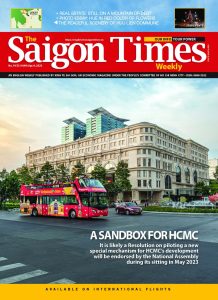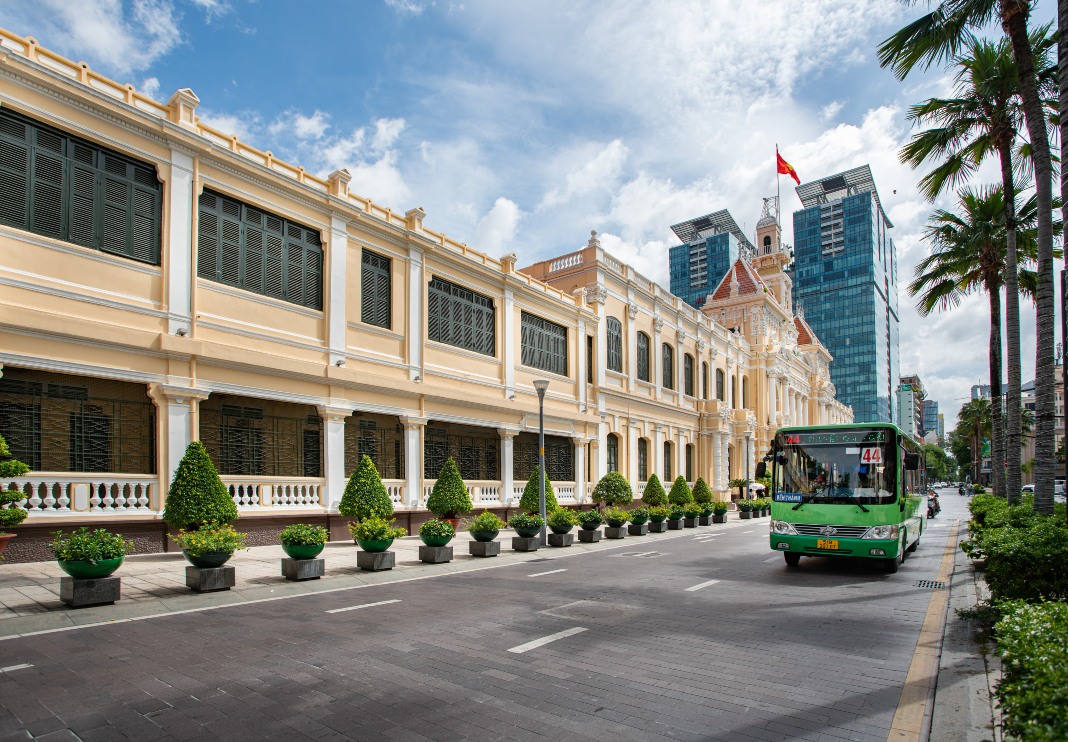It is likely a Resolution on piloting a new special mechanism for HCMC’s development will be endorsed by the National Assembly during its sitting in May 2023. A new resolution to replace Resolution 54/2017/QH14 is in dire need now, but a more important question is whether the new resolution will be a real sandbox for the city.
The Government has lately issued Resolution 38/NQ-CP, proposing the formulation of a National Assembly resolution on piloting a new special mechanism for HCMC’s development. The Minister of Justice, on behalf of the Government, will submit a report to the National Assembly’s Standing Committee to propose the inclusion of this draft resolution to the 2023 legislation program under the fast-track mode for approval at an NA sitting. The Minister of Planning and Investment will coordinate with HCMC authorities and relevant agencies to complete paperwork for the draft resolution.
Seeking the Assembly’s consideration and approval of a resolution on piloting special policies for HCMC’s development at the May 2023 sitting under the fast-track mode is a logical petition by the Government for the following reasons:
First, such a resolution is meant to codify Resolution 31-NQ/TW of the Politburo on the orientations for HCMC’s development to 2030 with a vision to 2045. The Politburo’s viewpoint is to perfect mechanisms, policies and conditions to create breakthroughs in mobilizing resources and making the most of potentials, advantages and the strategic position of HCMC to achieve fast and sustainable development. The city must sustain its role as a national hub in terms of economy, culture, education and training, and science and technology, alongside its position as a major national political center. It must also strive to soon become a major center in Southeast Asia as well as in Asia in terms of economy, finance, service, culture, education and training, science and technology, and innovation, and enhance its global competitiveness. To realize such goals, the Politburo urges the Government’s Party Committee to flesh out the Plan on issuing a resolution on piloting new, breakthrough mechanisms and policies for HCMC’s development and submit it to the National Assembly, which will issue a new NA Resolution to replace Resolution 54/2017/QH14 on piloting a new special mechanism for HCMC’s development.
Second, while five years implementing Resolution 54/2017/QH14 may not be enough to measure the efficacy of the special mechanism, HCMC is now facing more challenges. The growth momentum has weakened. The city’s economic growth rate averaged 10.2% a year in 1996-2010, but it slowed down to 7.22% annually in 2011-2015, and 6.41% in 2016-2020. Further, the growth quality has not met expectations, characterized by slow introduction of high tech into manufacturing, difficulties in reaching a higher rung of the value chain ladder and establishing a modern economic structure. The city’s excellence in certain spheres over the national average has blurred, while its traffic system and infrastructure have failed to meet higher demands for development and the people’s living condition improvement.
All negative impacts on the city’s development in general have also hindered the progress of implementing Resolution 54/2017/QH14 in particular. A report of the Government reviewing the enactment of Resolution 54/2017/QH14 that was submitted to the National Assembly at the October 2022 sitting stated that many activities have lagged behind schedule. Certain policies have been implemented, but with low efficacy, such as the policy of attracting scientists, experts and talented personnel. The special financial mechanism was designed to help the city have more resources, with a goal of mobilizing an extra sum of VND40 trillion to VND50 trillion each year, but only VND17.8 trillion was mobilized between 2018 and 2022. High-potential resources have not been properly tapped, such as equitization of State-owned enterprises, and exploitation of properties and land. Therefore, the city has faced a critical shortage of capital for technical and social infrastructure development.
Third, many issues have arisen and need to be addressed with new policies. For example, after more than one year implementing the urban administration model, HCMC authorities have found out certain mechanisms and policies that need to be codified to create a legal corridor for the development of Thu Duc City, while certain prevailing regulations need to be amended by the National Assembly. Or, given the current institutional frame, it is unviable to build the Plan on Developing the Vietnam International Financial Center in HCMC. Another issue is the lack of a legal corridor for the city to attract private resources for economic development, especially infrastructure, urban facelift, culture and sports. Also, the city needs to be delegated power to perform certain functions currently within the jurisdiction of ministries and central agencies to better serve the people and business.
Given the three above-mentioned reasons, and now that Resolution 54/2017/QH14 is due to expire in late 2023, there must be a new resolution soon for HCMC to avoid a legal discontinuity and to enable the city to mobilize resources for growth. More importantly, the new resolution must create breakthrough policies for HCMC, equipping it with a so-called sandbox with a testing environment independent from the common environment.
After five years implementing Resolution 54/2017/QH14, the achievements have been modest due to multiple reasons. The city spent the first year making plans and preparing itself for implementation, while in the two following years, the city was hit hard by Covid-19 which impeded the city from executing the new mechanism. Further, while the implementation of these new policies required prudent consideration, authorities at different levels have not been proactive enough, coupled with the lack of strong support and assistance from central agencies, as concluded by the Politburo in Resolution 31-NQ/TW.
In addition, a key reason behind this poor performance is that the new mechanism is not strong enough, and not much different from common policies. For example, the city governs hundreds of different spheres, but the new special mechanism applies in four spheres only (land management, investment management, state budget and finance management, and power delegation and wages for State employees). In each of the four spheres, the scope of the special mechanism is also narrow and limited to that sphere only. Take land management for example, the city’s People’s Council is authorized to decide on the land use conversion for rice farms of over ten hectares, but conditioned that the conversion is aligned to the land zoning plan, and in line with the nation’s regulations on land.
There cannot be breakthrough development without breakthrough policies. This matter of fact has been stated in Resolution 31-NQ/TW of the Politburo, which urged “issuance of outstanding policies and regulations to create the most favorable conditions for HCMC to efficiently tap its potentials and advantages, and to mobilize all resources to achieve fast and sustainable development.”
 “There must be a sandbox for the government. The government must design this sandbox on its own. What I expect the most is that HCMC will continue to ride the bandwagon of renovation, with breakthrough actions like what it performed in the 1990-2000 period,” said Dr. Vo Tri Thanh, former deputy director of the Central Institute for Economic Management, at a seminar in 2022.
“There must be a sandbox for the government. The government must design this sandbox on its own. What I expect the most is that HCMC will continue to ride the bandwagon of renovation, with breakthrough actions like what it performed in the 1990-2000 period,” said Dr. Vo Tri Thanh, former deputy director of the Central Institute for Economic Management, at a seminar in 2022.
In a recent article, Dr. Nguyen Si Dung, former deputy chair of the National Assembly’s Office, suggested that the new NA Resolution should be a legal framework that allows HCMC to take the initiative in performing its tasks on a trial basis to create breakthroughs. He referred to it as a “trial statute” – similar to a sandbox. Accordingly, when current mechanisms and policies no longer work, hindering development, HCMC can activate the trial statute to implement policies without having to seek permission from central authorities for each singular case.
Dr. Nguyen Si Dung also observed that HCMC itself had operated as a sandbox for breakthrough reforms during the period of Vietnam having a centrally-planned economy. Owing to its bold moves in “skipping” regulations, the city was able to overcome crises, setting precedents for nationwide economic reform. If the trial statute is given now, HCMC can once again become an “institutional laboratory” to conduct important tests for the country so as to create breakthrough development.









